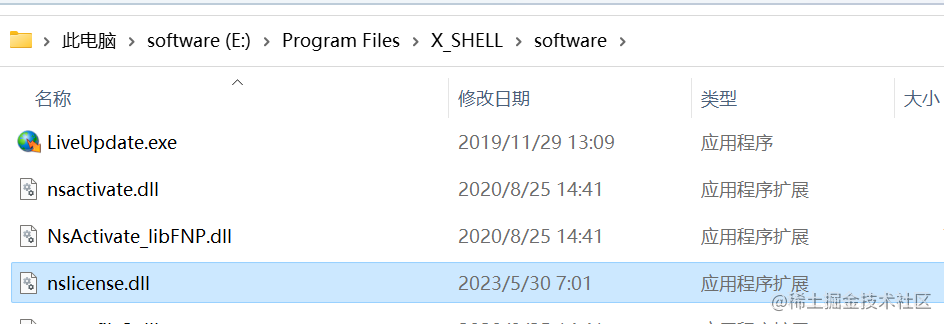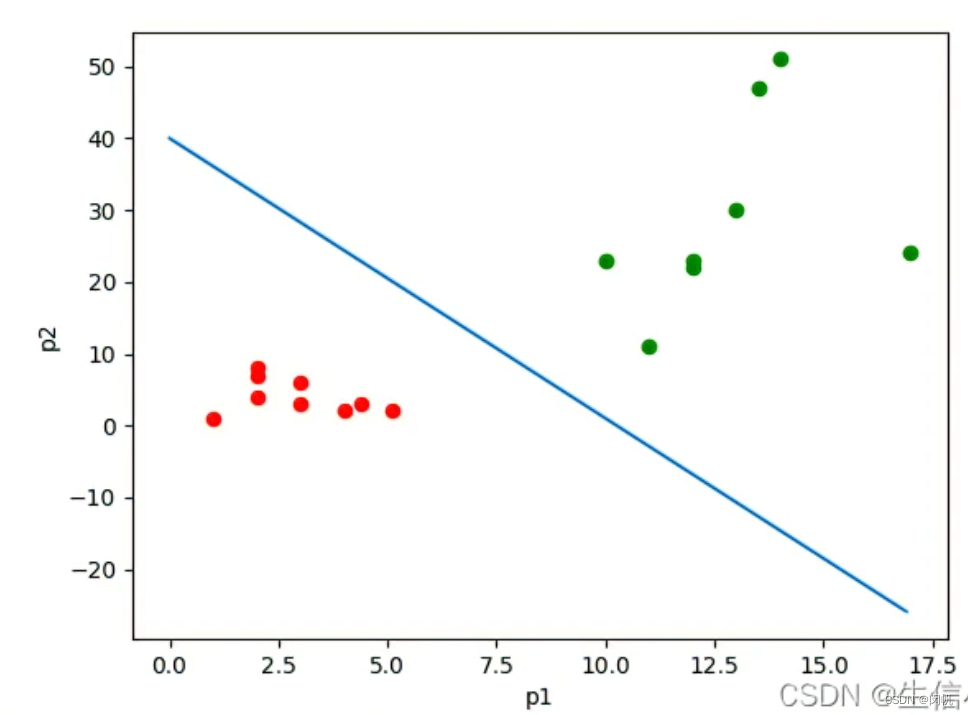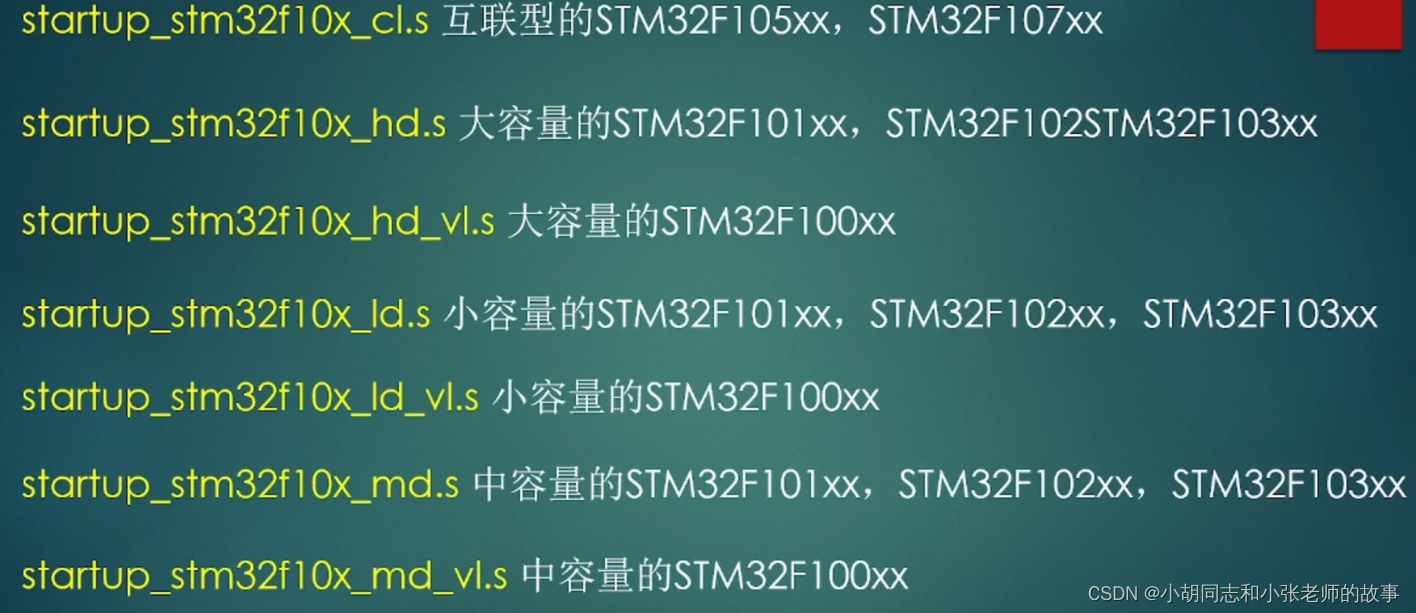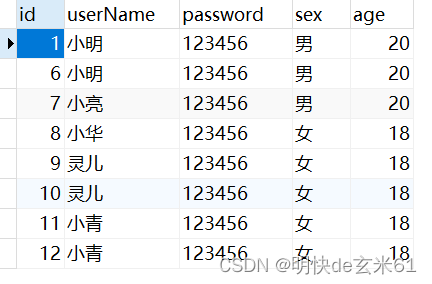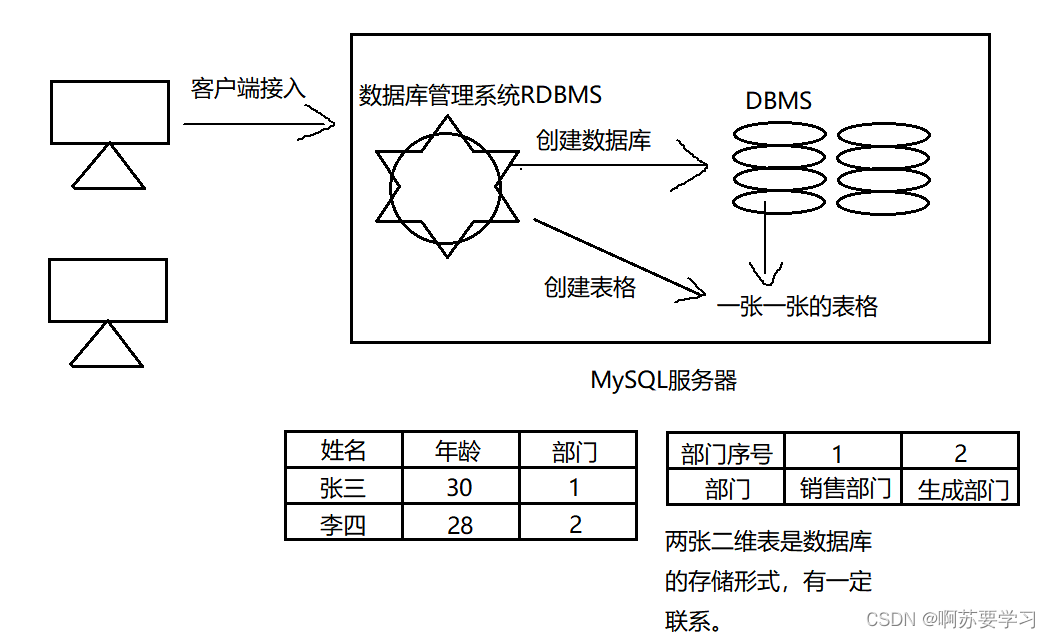基于循环神经网络的语言模型:RNNLM
RNNLM首次提出是在《Recurrent neural network based language model》这篇非常重要的神经网络语言模型论文种,发表于2010年。这篇论文的主要贡献是:
- 首次提出并实现了一种基于循环神经网络(Recurrent Neural Network)的语言模型,简称RNN语言模型。
- 通过在隐藏层引入循环连接来捕捉词汇序列的长程依赖关系,使模型具有更强的序列建模能力。
- 克服了NNLM中限制只能输入固定长度上下文,RNN支持可变长度的上下文输入。
- 开启了使用更加强大和复杂的神经网络来进行语言建模的研究潮流,如后续提出的LSTM语言模型等。
- 基于RNN的语言模型后来也在实践中得到广泛的应用,产生了重大影响。
RNNLM模型结构
-
x x x : 输入层
-
s s s : 隐藏/上下文/状态层
-
y y y : 输出层
-
x t x_t xt : t t t 时刻的输入
-
y t y_t yt : t t t 时刻的输出,下一个词的概率分布。
-
s t s_t st : t t t 时刻隐藏层的状态
模型的输入向量 x t x_t xt 由当前时刻的词向量 w t w_t wt和上一时刻的状态向量 s t − 1 s_{t-1} st−1组成:
x t = w t + s t − 1 + : c o n c a t e n a t e x_t = w_t + s_{t-1} \quad + : concatenate xt=wt+st−1+:concatenate
模型的正向计算过程如下:
s t j = f ( ∑ i x t i u j i ) (1) s_t^j = f(\sum_i x_t^i u_{ji}) \quad \text{(1)} stj=f(i∑xtiuji)(1)
y t k = g ( ∑ j s t j v k j ) (2) y_t^k = g(\sum_j s_t^j v_{kj}) \quad \text{(2)} ytk=g(j∑stjvkj)(2)
f ( z ) f(z) f(z) :为激活函数:
f ( z ) = 1 1 + e − z (3) f(z) = \frac{1}{1 + e^{-z}} \quad \text{(3)} f(z)=1+e−z1(3)
g(z), softmax函数:
f ( z m ) = e z m ∑ k e z k (4) f(z_m) = \frac{e^{z_m}}{\sum_k e^{z_k}} \quad \text{(4)} f(zm)=∑kezkezm(4)
训练细节
- s 0 s_0 s0 : 初始状态的初始化,采用较小的值例如0.1,当语料足够大时,这个不重要。
- w t w_t wt : 词的向量表示,采用one-hot编码,实践中长度在:30000 ∼ \sim ∼ 200000。
- 状态层的大小:30 ∼ \sim ∼ 500,实验证明语料越大,隐藏层越大。
- 初始学习率 α = 0.1 \alpha = 0.1 α=0.1,损失没有显著下降减半。
误差函数
E r r o r t = d e s i r e d t − y t (5) Error_t = desired_t - y_t \quad \text{(5)} Errort=desiredt−yt(5)
- d e s i r e d t desired_t desiredt : t t t 时刻真实的下一个词的one-hot编码向量。
- y t y_t yt : 模型的预测输出。
优化
训练语料的预处理:将所有出现频率低于阈值的单词(在训练文本中)合并为一个特殊的标记。
P ( w t + 1 i ∣ w t , s t − 1 ) = { y t r a r e C r a r e i f w t + 1 i i s r a r e y t i o t h e r w i s e P(w^i_{t+1}|w_t, s_{t-1}) = \begin{equation} \left\{ \begin{aligned} & \frac{y_t^{rare}}{C_{rare}} \quad if \quad w^i_{t+1} \quad is \quad rare \\ & y_t^i \quad otherwise \\ \end{aligned} \right. \end{equation} P(wt+1i∣wt,st−1)=⎩ ⎨ ⎧Crareytrareifwt+1iisrareytiotherwise
模型实现:Pytorch
- 模型没有100%的还原RNNLM,例如词向量的表示,采用了当前比较流行的Embedding
- 循环连接部分分别实现RNNcell和GRUcell
- GRUcell:
- GRU有两个门结构:重置门和更新门。重置门可以决定遗忘先前的隐状态信息,更新门可以决定保留先前的隐状态信息。
- GRU的隐状态只包含一个隐层向量,而普通RNN每一步都会生成一个隐状态向量。
- GRU在结构上更加简单,只涉及一个隐状态向量和两个门控制向量,计算量更小。
- 实验结果显示,与相同配置的普通RNN相比,GRU能取得更好的性能,特别是在长序列的任务上。
import os
import time
import pandas as pd
from dataclasses import dataclass
import torch
import torch.nn as nn
from torch.nn import functional as F
from torch.utils.data import Dataset
from torch.utils.data.dataloader import DataLoader
from torch.utils.tensorboard import SummaryWriter
# 模型参数
@dataclass
class ModelConfig:
vocab_size: int = None
n_embed : int = None
n_hidden: int = None
RNNcell
class RNNCell(nn.Module):
"""
the job of a 'Cell' is to:
take input at current time step x_{t} and the hidden state at the
previous time step h_{t-1} and return the resulting hidden state
h_{t} at the current timestep
"""
def __init__(self, config):
super().__init__()
self.xh_to_h = nn.Linear(config.n_embed + config.n_hidden, config.n_hidden)
def forward(self, xt, hprev):
xh = torch.cat([xt, hprev], dim=1)
ht = F.tanh(self.xh_to_h(xh))
return ht
GRUcell
class GRUCell(nn.Module):
"""
same job as RNN cell, but a bit more complicated recurrence formula
that makes the GRU more expressive and easier to optimize.
"""
def __init__(self, config):
super().__init__()
# input, forget, output, gate
self.xh_to_z = nn.Linear(config.n_embed + config.n_hidden, config.n_hidden)
self.xh_to_r = nn.Linear(config.n_embed + config.n_hidden, config.n_hidden)
self.xh_to_hbar = nn.Linear(config.n_embed + config.n_hidden, config.n_hidden)
def forward(self, xt, hprev):
# first use the reset gate to wipe some channels of the hidden state to zero
xh = torch.cat([xt, hprev], dim=1)
r = F.sigmoid(self.xh_to_r(xh))
hprev_reset = r * hprev
# calculate the candidate new hidden state hbar
xhr = torch.cat([xt, hprev_reset], dim=1)
hbar = F.tanh(self.xh_to_hbar(xhr))
# calculate the switch gate that determines if each channel should be updated at all
z = F.sigmoid(self.xh_to_z(xh))
# blend the previous hidden state and the new candidate hidden state
ht = (1 - z) * hprev + z * hbar
return ht
class RNN(nn.Module):
def __init__(self, config, cell_type):
super().__init__()
self.vocab_size = config.vocab_size
self.start = nn.Parameter(torch.zeros(1, config.n_hidden)) # the starting hidden state
self.wte = nn.Embedding(config.vocab_size, config.n_embed) # token embeddings table
if cell_type == 'rnn':
self.cell = RNNCell(config)
elif cell_type == 'gru':
self.cell = GRUCell(config)
self.lm_head = nn.Linear(config.n_hidden, self.vocab_size)
def forward(self, idx, targets=None):
device = idx.device
b, t = idx.size()
# embed all the integers up front and all at once for efficiency
emb = self.wte(idx) # (b, t, n_embed)
# sequentially iterate over the inputs and update the RNN state each tick
hprev = self.start.expand((b, -1)) # expand out the batch dimension
hiddens = []
for i in range(t):
xt = emb[:, i, :] # (b, n_hidden)
ht = self.cell(xt, hprev) # (b, n_hidden)
hprev = ht
hiddens.append(ht)
# decode the outputs
hidden = torch.stack(hiddens, 1) # (b, t, n_hidden)
logits = self.lm_head(hidden)
# if we are given some desired targets also calculate the loss
loss = None
if targets is not None:
loss = F.cross_entropy(logits.view(-1, logits.size(-1)), targets.view(-1), ignore_index=-1)
return logits, loss
测试数据
数据集来10k+中文外卖评价数据集:
data = pd.read_csv('./dataset/waimai_10k.csv')
data.dropna(subset='review',inplace=True)
data['review_length'] = data.review.apply(lambda x:len(x))
data.sample(5)
| label | review | review_length | |
|---|---|---|---|
| 2062 | 1 | 价格实惠,值得购买。 | 10 |
| 2372 | 1 | 很好吃,奶茶还好,天很冷,还没有凉 | 17 |
| 6399 | 0 | 这么好的店、宫保鸡丁竟然拿土豆充当鸡肉!20多的菜,至于吗? | 30 |
| 3147 | 1 | 挺好的,豆浆很好喝~~~ | 12 |
| 1248 | 1 | 好吃,真的是大肘子肉 | 10 |
语料统计信息:
data = data[data.review_length <=50] # 滤掉长度超过300的评论
words = data.review.tolist()
chars = sorted(list(set(''.join(words))))
max_word_length = max(len(w) for w in words)
print(f"number of examples: {len(words)}")
print(f"max word length: {max_word_length}")
print(f"size of vocabulary: {len(chars)}")
number of examples: 10796
max word length: 50
size of vocabulary: 2272
划分训练/测试数据
test_set_size = min(1000, int(len(words) * 0.1))
rp = torch.randperm(len(words)).tolist()
train_words = [words[i] for i in rp[:-test_set_size]]
test_words = [words[i] for i in rp[-test_set_size:]]
print(f"split up the dataset into {len(train_words)} training examples and {len(test_words)} test examples")
split up the dataset into 9796 training examples and 1000 test examples
构造字符数据集[tensor]
- < BLANK> : 0
- token seqs : [1, 2, 3, 4, 5, 6]
- x : [0, 1, 2, 3, 4, 5, 6]
- y : [1, 2, 3, 4, 5, 6, 0]
class CharDataset(Dataset):
def __init__(self, words, chars, max_word_length):
self.words = words
self.chars = chars
self.max_word_length = max_word_length
# char-->index-->char
self.char2i = {ch:i+1 for i,ch in enumerate(chars)}
self.i2char = {i:s for s,i in self.char2i.items()}
def __len__(self):
return len(self.words)
def contains(self, word):
return word in self.words
def get_vocab_size(self):
return len(self.chars) + 1
def get_output_length(self):
return self.max_word_length + 1
def encode(self, word):
# char sequece ---> index sequence
ix = torch.tensor([self.char2i[w] for w in word], dtype=torch.long)
return ix
def decode(self, ix):
# index sequence ---> char sequence
word = ''.join(self.i2char[i] for i in ix)
return word
def __getitem__(self, idx):
word = self.words[idx]
ix = self.encode(word)
x = torch.zeros(self.max_word_length + 1, dtype=torch.long)
y = torch.zeros(self.max_word_length + 1, dtype=torch.long)
x[1:1+len(ix)] = ix
y[:len(ix)] = ix
y[len(ix)+1:] = -1 # index -1 will mask the loss
return x, y
数据加载器[DataLoader]
class InfiniteDataLoader:
def __init__(self, dataset, **kwargs):
train_sampler = torch.utils.data.RandomSampler(dataset, replacement=True, num_samples=int(1e10))
self.train_loader = DataLoader(dataset, sampler=train_sampler, **kwargs)
self.data_iter = iter(self.train_loader)
def next(self):
try:
batch = next(self.data_iter)
except StopIteration: # this will technically only happen after 1e10 samples... (i.e. basically never)
self.data_iter = iter(self.train_loader)
batch = next(self.data_iter)
return batch
训练模型
# 模型评估
@torch.inference_mode()
def evaluate(model, dataset, batch_size=10, max_batches=None):
model.eval()
loader = DataLoader(dataset, shuffle=True, batch_size=batch_size, num_workers=0)
losses = []
for i, batch in enumerate(loader):
batch = [t.to('cuda') for t in batch]
X, Y = batch
logits, loss = model(X, Y)
losses.append(loss.item())
if max_batches is not None and i >= max_batches:
break
mean_loss = torch.tensor(losses).mean().item()
model.train() # reset model back to training mode
return mean_loss
环境初始化:
torch.manual_seed(seed=12345)
torch.cuda.manual_seed_all(seed=12345)
work_dir = "./Rnn_log"
os.makedirs(work_dir, exist_ok=True)
writer = SummaryWriter(log_dir=work_dir)
模型初始化:
config = ModelConfig(vocab_size=len(chars)+1,
n_embed=64,
n_hidden=128)
#model = RNN(config,cell_type='rnn')
model = RNN(config,cell_type='gru')
model.to('cuda')
RNN(
(wte): Embedding(2273, 64)
(cell): GRUCell(
(xh_to_z): Linear(in_features=192, out_features=128, bias=True)
(xh_to_r): Linear(in_features=192, out_features=128, bias=True)
(xh_to_hbar): Linear(in_features=192, out_features=128, bias=True)
)
(lm_head): Linear(in_features=128, out_features=2273, bias=True)
)
初始化数据:
train_dataset = CharDataset(train_words, chars, max_word_length)
test_dataset = CharDataset(test_words, chars, max_word_length)
train_dataset[0][0].shape, train_dataset[0][1].shape
(torch.Size([51]), torch.Size([51]))
Training:
# init optimizer
optimizer = torch.optim.AdamW(model.parameters(), lr=5e-4, weight_decay=0.01, betas=(0.9, 0.99), eps=1e-8)
# init dataloader
batch_loader = InfiniteDataLoader(train_dataset, batch_size=128, pin_memory=True, num_workers=4)
# training loop
best_loss = None
step = 0
train_losses, test_losses = [],[]
while True:
t0 = time.time()
# get the next batch, ship to device, and unpack it to input and target
batch = batch_loader.next()
batch = [t.to('cuda') for t in batch]
X, Y = batch
# feed into the model
logits, loss = model(X, Y)
# calculate the gradient, update the weights
model.zero_grad(set_to_none=True)
loss.backward()
optimizer.step()
# wait for all CUDA work on the GPU to finish then calculate iteration time taken
torch.cuda.synchronize()
t1 = time.time()
# logging
if step % 1000 == 0:
print(f"step {step} | loss {loss.item():.4f} | step time {(t1-t0)*1000:.2f}ms")
# evaluate the model
if step > 0 and step % 100 == 0:
train_loss = evaluate(model, train_dataset, batch_size=100, max_batches=10)
test_loss = evaluate(model, test_dataset, batch_size=100, max_batches=10)
train_losses.append(train_loss)
test_losses.append(test_loss)
# save the model to disk if it has improved
if best_loss is None or test_loss < best_loss:
out_path = os.path.join(work_dir, "model.pt")
print(f"test loss {test_loss} is the best so far, saving model to {out_path}")
torch.save(model.state_dict(), out_path)
best_loss = test_loss
step += 1
# termination conditions
if step > 10100:
break
step 0 | loss 7.7387 | step time 84.71ms
test loss 5.455846786499023 is the best so far, saving model to ./Rnn_log/model.pt
test loss 5.085928916931152 is the best so far, saving model to ./Rnn_log/model.pt
test loss 4.722366809844971 is the best so far, saving model to ./Rnn_log/model.pt
test loss 4.451460361480713 is the best so far, saving model to ./Rnn_log/model.pt
test loss 4.261294364929199 is the best so far, saving model to ./Rnn_log/model.pt
test loss 4.121057987213135 is the best so far, saving model to ./Rnn_log/model.pt
test loss 4.0212507247924805 is the best so far, saving model to ./Rnn_log/model.pt
test loss 3.935884475708008 is the best so far, saving model to ./Rnn_log/model.pt
test loss 3.87166166305542 is the best so far, saving model to ./Rnn_log/model.pt
step 1000 | loss 3.7037 | step time 66.99ms
.......
test loss 3.476886749267578 is the best so far, saving model to ./Rnn_log/model.pt
step 4000 | loss 2.9470 | step time 57.79ms
step 5000 | loss 2.8236 | step time 60.15ms
step 6000 | loss 2.7413 | step time 60.07ms
step 7000 | loss 2.6398 | step time 58.10ms
step 8000 | loss 2.5385 | step time 58.41ms
step 9000 | loss 2.3928 | step time 58.49ms
step 10000 | loss 2.2889 | step time 57.82ms
RNNLM vs GRULM

测试:评论生成器
@torch.no_grad()
def generate(model, idx, max_new_tokens, temperature=1.0, do_sample=False, top_k=None):
for _ in range(max_new_tokens):
# forward the model to get the logits for the index in the sequence
logits, _ = model(idx)
# pluck the logits at the final step and scale by desired temperature
logits = logits[:,-1,:] / temperature
# optionally crop the logits to only the top k options
if top_k is not None:
v, _ = torch.topk(logits, top_k)
logits[logits < v[:, [-1]]] = -float('Inf')
# apply softmax to convert logits to (normalized) probabilities
probs = F.softmax(logits, dim=-1)
# either sample from the distribution or take the most likely element
if do_sample:
idx_next = torch.multinomial(probs, num_samples=1)
else:
_, idx_next = torch.topk(probs, k=1, dim=-1)
# append sampled index to the running sequence and continue
idx = torch.cat((idx, idx_next), dim=-1)
return idx
def print_samples(num=13):
# inital 0 tokens
X_init = torch.zeros((num, 1), dtype=torch.long).to('cuda')
steps = train_dataset.get_output_length() - 1 # -1 because we already start with <START> token (index 0)
X_samp = generate(model, X_init, steps, top_k=None, do_sample=True).to('cuda')
new_samples = []
for i in range(X_samp.size(0)):
# get the i'th row of sampled integers, as python list
row = X_samp[i, 1:].tolist() # note: we need to crop out the first <START> token
# token 0 is the <END> token, so we crop the output sequence at that point
crop_index = row.index(0) if 0 in row else len(row)
row = row[:crop_index]
word_samp = train_dataset.decode(row)
new_samples.append(word_samp)
return new_samples
print_samples(num=10)
['不好吃,肥肉煎饼!不松心了!',
'山药有两次,不过小蛋鱼还不错,肉里的不筋道少',
'草面不值的煎饼',
'菜给的不错,服务好,速度快,来了!绝对的是辣',
'速度很快,不贴心吧',
'好吃,就是量少,味道不怎么样啊',
'菜品很喜欢,百度骑士特别棒!',
'金针菇汉堡我喜欢,面好大馅鲜,很好吃,毕竟糊所有菜品不如以前的菜饼。',
'蛮生的。送过小哥快被味道真差。',
'巨好吃~!!']
